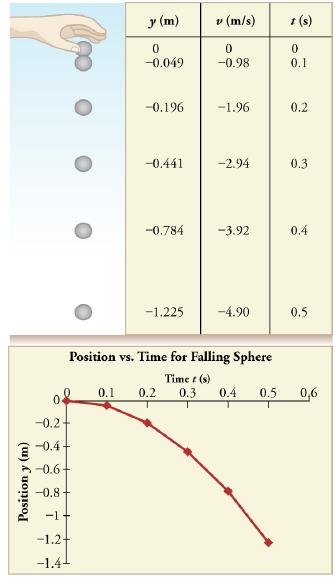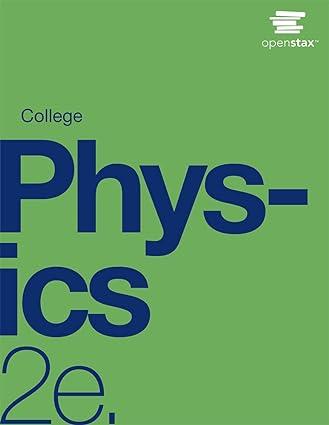The acceleration due to gravity on Earth differs slightly from place to place, depending on topography (e.g.,
Question:
The acceleration due to gravity on Earth differs slightly from place to place, depending on topography (e.g., whether you are on a hill or in a valley) and subsurface geology (whether there is dense rock like iron ore as opposed to light rock like salt beneath you.) The precise acceleration due to gravity can be calculated from data taken in an introductory physics laboratory course. An object, usually a metal ball for which air resistance is negligible, is dropped and the time it takes to fall a known distance is measured. See, for example, Figure 2.42. Very precise results can be produced with this method if sufficient care is taken in measuring the distance fallen and the elapsed time.
Data given in Figure 2.42


Suppose the ball falls 1.0000 m in 0.45173 s. Assuming the ball is not affected by air resistance, what is the precise acceleration due to gravity at this location?
Strategy
Draw a sketch.
We need to solve for acceleration a. Note that in this case, displacement is downward and therefore negative, as is acceleration.
Step by Step Answer:






